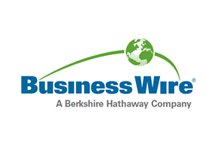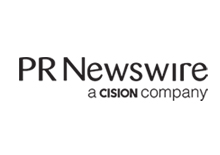Predictive & Prescriptive Analytics Market, 2024 - Growing Importance of Big Data with Large Volumes of Data Generated in Structured and Unstructured Form
DUBLIN, June 27, 2019 /PRNewswire/ -- The "Predictive & Prescriptive Analytics Market - Growth, Trends and Forecasts (2019 - 2024)" report has been added to ResearchAndMarkets.com's offering.
https://mma.prnewswire.com/media/539438/Research_and_Markets_Logo.jpg
The predictive & prescriptive analytics market was valued at USD 6.64 billion in 2018 and is expected to reach a value of USD 22.50 billion by 2024 at a CAGR of 22.53% during the forecast period 2019-2024.
An increasing emphasis has been placed on the need for predictive analytics, with skills to manipulate data and develop custom algorithms in a quest to unlock hidden value. Prescriptive analytics has been moving beyond its core community of operations, research, and management science professionals, and becoming increasingly embedded in business applications.
-- Advanced analytics solution offers a set of techniques that help deal
with these challenges through statistical and technical methods,
ultimately supporting strategic and fact-based decisions. Owing to this,
analytics have become significant for Business Intelligence (BI) across
various end-user industries.
-- The demand for BI has been on the rise, in recent years, with
enterprises and organizations yearning to enhance productivity and
increase sales by adopting automated solutions. BI tools have witnessed
a tremendous surge in its adoption across various industries around the
world, with the global market for BI and advanced analytics estimated to
reach approximately USD 25 billion, by the end of 2020.
-- Data privacy and security issues have raised. Due to the details that
are getting generated about the behavioral aspects, users are feeling
vulnerable about the confidentiality of data getting generated.
Scope of the Report
Predictive analytics describes any approach to data mining with an emphasis on prediction (rather than description, classification or clustering). Prescriptive Analytics is a form of advanced analytics which examines data or content and is characterized by techniques such as graph analysis, simulation, complex event processing, neural networks, recommendation engines, heuristics, and machine learning.
Key Market Trends
Retail is Expected to Hold a Major Market Share
Owing to the rising demand for consumer goods and growth in e-commerce, the retail sector is witnessing significant growth in its sales. This has given rise to the data generated in the industry, with the implementation of big data solutions. Further, increasing competition in the industry has encouraged players to ensure efficient working across various stages in the delivery.
Following are the applications in the retail industry, which generate a significant amount of data and require advanced predictive and prescriptive analytics to excel.
-- Customer Identification and Retention: With the help of analysis, it is
possible to identify valued customers and retain them, as well as
identify potential customers and attract them with valued offers.
Customers are less likely to churn if they are similar to your primary
target customers. If you have access to data about both your customers
and a list of potential customers, this is an excellent opportunity to
focus on only those who are less likely to churn. For instance, Walmart,
the world's biggest retailer with over 20,000 stores in 28 countries, is
in the process of building the world' biggest private cloud, to process
2.5 petabytes of data every hour.
-- Inventory Planning and Risk Mitigation: Predictive analytics leverages
big data and empowers retailers to design their stock, renew
administration, and promote methodologies, along with minimizing risk
and uncertainty. It is not only essential to predict the pattern on a
large scale, but also to look at the minute details. Product inventory
and shelf space have always been a retailer's most valuable resources.
Now analytics can be used to determine which products provide the
highest level of sales and profits. It helps retailers to plan a variety
of assortment mixes and create balanced merchandise planning strategies,
with unique market-based, customer-based, fashion-based, and price-based
assortments.
-- Personalized Customer Service: With a tremendous amount of data, it is
easy to start evaluating consumers on a more granular level. Rather than
making an enormous campaign that costs thousands and has restricted
effect, predictive analytics can customize the showcasing procedure.
-- Accurate Insights in Real-time: Big data not only provides oversight,
but it also gives insights about an individual. With predictive and
prescriptive analytics, one can take a look at every person and assess
their purchases continuously, to precisely foresee what they may
purchase given their particular purchasing propensities.
North America is Expected to Hold Major Market Share
-- The United States leads the North American market for predictive and
prescriptive analytics, owing to early and heavy usage of advanced
analytics across the majority of its industries. The retail sector in
the country is flourishing rapidly. According to the NRF (National
Retail Federation), in 2017, for each company closing a store, 2.7
companies were opening stores. This places increased importance on
in-store analytics.
-- The retail e-commerce sales in the country are expected to increase to
USD 735.36 billion by 2023, from USD 504.58 billion in 2018. This has
made retailers use predictive analytics to gain a competitive advantage.
For instance, the e-commerce leader, Amazon, uses predictive analytics
to know exactly what products people buy, browse, and return. Amazon
applies deep, data-driven insights to predictive analytics, to make
decisions on its product assortment strategy. Using predictive analytics
helps Amazon maximize sales, by filling its store shelves and endless
aisles online with the merchandise shoppers want.
-- According to the National Academy of Medicine, the US healthcare system
spends USD 750 billion on unnecessary services. Predictive analytics can
reduce the wastage of money and save up to 15% of its budget, by
analyzing the likelihood of the particular patient being subjected to a
specific disease.
-- In the United States, policies, such as the CMS EHR Incentive program
and the HiTech Act, have raised investments in healthcare from 2011.
This has augmented the adoption of digital solutions, which, in turn,
has resulted in thriving in the volumes of data held by a typical
healthcare organization. Further, the top six advanced analytics
providers, in 2017, were US-based. These vendors of predictive and
prescriptive solutions are benefiting significantly, owing to the
prospering digital industry in the country.
Competitive Landscape
Global Predictive and Prescriptive Analytics market is moderately competitive and consists of a few players. In terms of market share, few of the major players currently dominate the market. The manufacturers are focussed on product differentiation in order to gain a competitive advantage. One way of achieving this is to focus on continuous innovation. For instance, Oracle's Autonomous Data Science Cloud Service was recognized as a leader in notebook-based predictive analytics and machine learning, by Forrester Research, earning the highest average current offering score, as well as the highest possible score for its solution roadmap.
Key Topics Covered:
1 INTRODUCTION
1.1 Study Deliverables
1.2 Study Assumptions
1.3 Scope of the Study
2 RESEARCH METHODOLOGY
3 EXECUTIVE SUMMARY
4 MARKET DYNAMICS
4.1 Market Overview
4.2 Introduction to Market Drivers and Restraints
4.3 Market Drivers
4.3.1 Growing importance of big data with large volumes of data generated, both in structured and unstructured form
4.3.2 Increasing adoption of business analytics and business intelligence
4.4 Market Restraints
4.4.1 Data privacy and security concerns
4.5 Industry Attractiveness - Porter's Five Force Analysis
5 TECHNOLOGY SNAPSHOT
6 MARKET SEGMENTATION
6.1 End - user Industry
6.1.1 BFSI
6.1.2 Retail
6.1.3 Healthcare
6.1.4 IT and Telecom
6.1.5 Industrial (Manufacturing, Automotive, Energy and Mining)
6.1.6 Government and Defense
6.1.7 Other End- user Industries
6.2 Geography
7 COMPETITIVE LANDSCAPE
7.1 Company Profiles
7.1.1 Oracle Corporation
7.1.2 SAP SE
7.1.3 International Business Machines (IBM) Corporation
7.1.4 Microsoft Corporation
7.1.5 SAS Institute Inc.
7.1.6 Accenture PLC
7.1.7 Infor Inc.
7.1.8 Teradata Corporation
7.1.9 Angoss Corporation
7.1.10 Salesforce.com
8 INVESTMENT ANALYSIS
9 MARKET OPPORTUNITIES AND FUTURE TRENDS
For more information about this report visit https://www.researchandmarkets.com/r/ec2jmy
Research and Markets also offers Custom Research services providing focused, comprehensive and tailored research.
Media Contact:
Research and Markets
Laura Wood, Senior Manager
press@researchandmarkets.com
For E.S.T Office Hours Call +1-917-300-0470
For U.S./CAN Toll Free Call +1-800-526-8630
For GMT Office Hours Call +353-1-416-8900
U.S. Fax: 646-607-1907
Fax (outside U.S.): +353-1-481-1716
SOURCE Research and Markets





